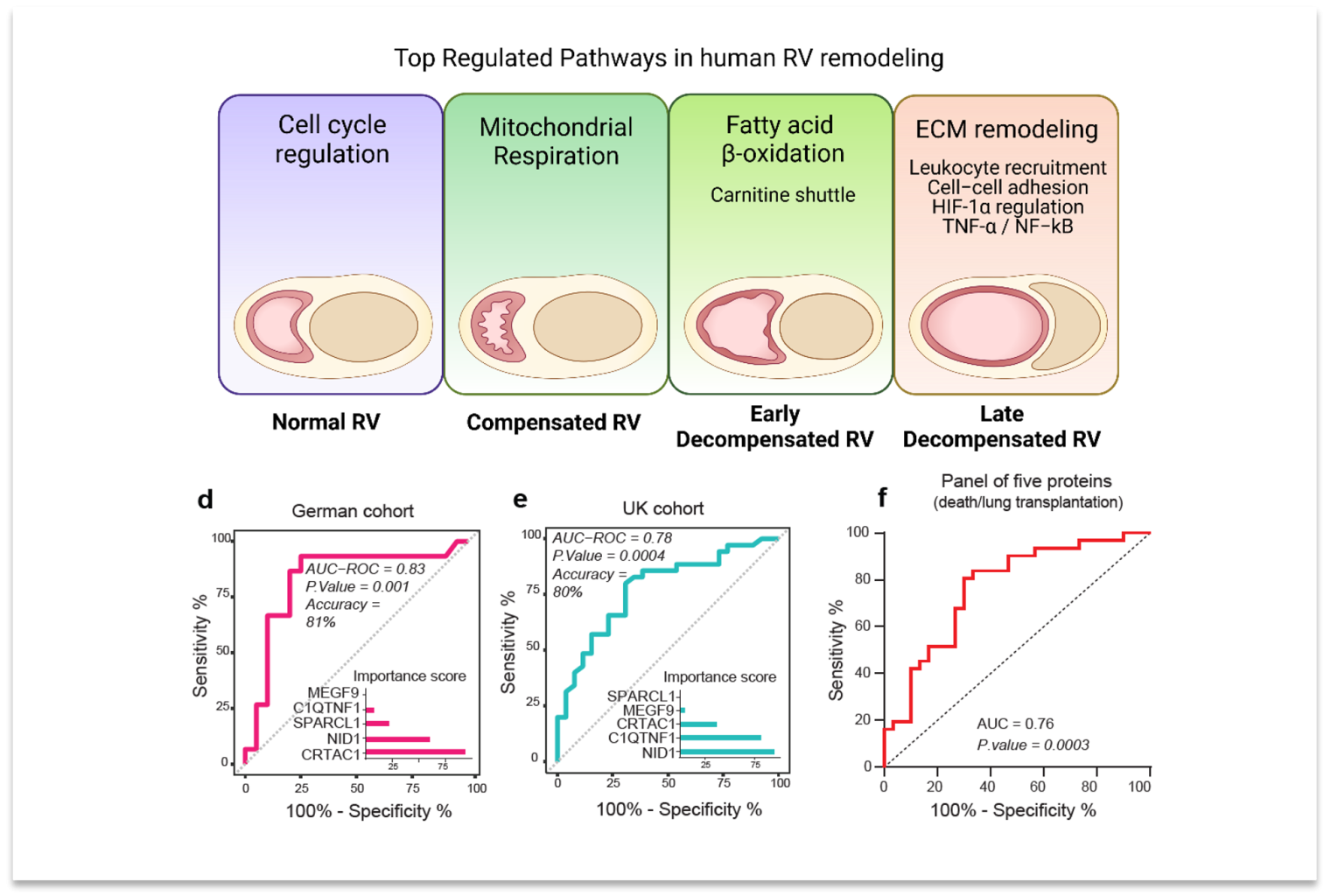November 2023
Nat Cardiovasc Res
Khassafi F, Chelladurai P, Valasarajan C, Nayakanti SR, Martineau S, Sommer N, Yokokawa T, Boucherat O, Kamal A, Kiely DG, Swift AJ, Alabed S, Omura J, Breuils-Bonnet S, Kuenne C, Potus F, Günther S, Savai R, Seeger W, Looso M, Lawrie A, Zaugg JB, Tello K, Provencher A, Bonnet S & Pullamsetti SS
Understanding right ventricular (RV) failure is crucial in different forms of pulmonary hypertension (PH), particularly in pulmonary arterial hypertension (PAH), due to the persistent increased RV afterload. Understanding RV function and stage-specific phenotype therefore has a profound impact on the diagnosis and prognosis of PAH. A recent study by Fatemeh Khassafi from Pullamsetti´s lab published in Nature Cardiovascular Research, delved into this significance by investigating RV dysfunction at various disease stages, aiming to uncover molecular signatures and identify critical RV-specific biomarkers that will enable the development of targeted interventions to increase patient survival and mitigate adverse clinical outcomes.
Through transcriptome analysis of RV tissue from more than 40 patients and two PAH animal models, the researchers uncovered novel subsets within the compensated and decompensated RV states associated with PAH and revealed their distinct signaling pathways, highlighting pathways related to ECM remodeling, energy metabolism (via HIF-1α regulation), and inflammatory responses (such as TNF-α activation via NF-kB). The comprehensive analysis identified specific genes and signaling pathways

Furthermore, they showed different mechanisms of RV adaptation and failure in male and female PAH patients. Furthermore, the researchers emphasized the importance of identifying biomarkers for the prognosis of PAH-related RV dysfunction using an integrative multi-omics approach. They identified a group of five ECM proteins as potential plasma biomarkers (NID1, C1QTNF1, CRTAC1, MEGF9 and SPARCL1) and demonstrated their prognostic value in differentiating stages of RV dysfunction. Plasma levels of these five proteins together could not only distinguish RV subgroups but also predict the clinical outcome of patients in two independent cohorts. The study’s integrative approach bridges omics-based phenotyping, reveals potential prognostic markers and therapeutic targets for PAH-related RV problems, and provides insights into disease progression and treatment pathways.
https://www.nature.com/articles/s44161-023-00338-3
https://www.nature.com/articles/s44161-023-00340-9